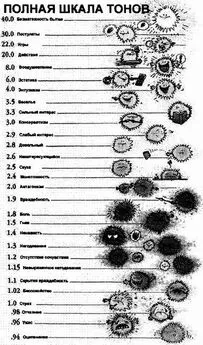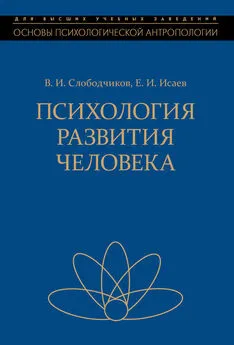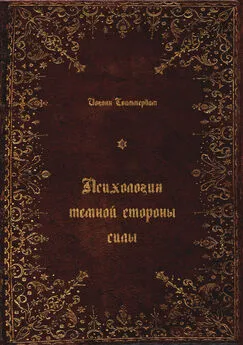Джулия Шоу - Психология зла. Почему человек выбирает темную сторону
- Название:Психология зла. Почему человек выбирает темную сторону
- Автор:
- Жанр:
- Издательство:Альпина Паблишер
- Год:2020
- Город:Москва
- ISBN:978-5-9614-3544-3
- Рейтинг:
- Избранное:Добавить в избранное
-
Отзывы:
-
Ваша оценка:
Джулия Шоу - Психология зла. Почему человек выбирает темную сторону краткое содержание
«Психология зла» - это подробное и увлекательное исследование темной стороны человека. Доктор Джулия Шоу на примерах из массовой культуры и реальной жизни предлагает порассуждать о проблемах, о которых обычно молчат, хотя знание факторов, способных спровоцировать недопустимое поведение, помогает замечать их и не давать им развернуться в полную силу.
Психология зла. Почему человек выбирает темную сторону - читать онлайн бесплатно ознакомительный отрывок
Интервал:
Закладка:
Furnham, A., & Gunter, B. ‘Just world beliefs and attitudes towards the poor’. British Journal of Social Psychology, 23 (3) (1984), pp. 265-69.
244
Stromwall, L. A., Alfredsson, H., & Landstrom, S. ‘Rape victim and perpetrator blame and the Just World hypothesis: the influence of victim gender and age’. Journal of Sexual Aggression, 19 (2) (2013), pp. 207-17.
245
Walters, J. ‘Martin Shkreli: entrepreneur defends decision’. The Guardian, 22 September 2017; https://www.theguardian.com/business/2015/sep/21/entrepreneur-defends-raise-price-daraprim-drug.
246
‘Public Enemy’. Harper’s, September 2017; https://harpers.org/archive/2017/09/public-enemy/.
247
Речь идет об альбоме «Once Upon A Time in Shaolin». По словам продюсера группы, договоренность была достигнута до того, как стало известно о деятельности бизнесмена. В 2018 году суд постановил конфисковать альбом у Шкрели. — Прим. ред.
248
Mangan, D. ‘Martin Shkreli slaps down rapper’. CNBC, 28 January 2016; https://www.cnbc.com/2016/01/28/martin-shkreli-slaps-down-rapper-ghostface-killah-in-vulgar-video.html.
249
Keshner, A. ‘Pharma Bro’s just a Lie-vy League alum’. New York Daily News, 19 July 2017; http://www.nydailynews.com/news/crime/columbia-registrar-no-records-shkreli-enrollment-article-1.3339005.
250
Rushe, D., & Glenza, J. ‘Martin Shkreli jailed’. The Guardian, 9 March 2018; https://www.theguardian.com/us-news/2018/mar/09/martin-shkreli-jail-sentence-how-long-pharma-bro-court-trial.
251
Umphress, E., & Bingham, J. ‘When employees do bad things for good reasons: examining unethical pro-organizational behaviors’. Organization Science, 22 (3) (2011), pp. 621-40; https://doi.org/abs/10.1287/orsc.1100.0559.
252
Palazzo, G., Krings, F., & Hoffrage, U. ‘Ethical blindness’. Journal of Business Ethics, 109 (3) (2012), pp. 323-38.
253
Elphick, C., Minhas, R., & Shaw, J. ‘Dark figures’. Unpublished, Open Science Framework (2017); https://osf.io/7skxh.
254
Garber, M. ‘“First They Came”: the poem of the protests’. The Atlantic, 29 January 2017; https://www.theatlantic.com/entertainment/archive/2017/01/first-they-came-poem-history/514895/.
255
Niemöller, M. ‘First they came for the Socialists’, version used at the United States Holocaust Memorial Museum; https://www.ushmm.org/wlc/en/article.php?ModuleId=10007392.
256
Connolly, K. ‘Joseph Goebbels’ 105-year-old secretary’. The Guardian, 15 August 2016; https://www.theguardian.com/world/2016/aug/15/brunhilde-pomsel-nazi-joseph-goebbels-propaganda-machine.
257
Под «окончательным решением» подразумевалось массовое уничтожение еврейского населения Европы. — Прим. ред.
258
Милгрэм С. Подчинение авторитету: Научный взгляд на власть и мораль. — М.: Альпина нон-фикшн, 2016.
259
Milgram, S. ‘The perils of obedience’. Harper’s, 12 (6) (1973).
260
Milgram, S. ‘Behavioral study of obedience’. Journal of Abnormal and Social Psychology, 67 (4) (1963), p. 371.
261
Burger, J. M. ‘Replicating Milgram: would people still obey today?’ American Psychologist, 64 (1) (2009), p. 1; and Dolinski, D., Grzyb, T., Folwarczny, M., Grzybala, P., . . . & Trojanowski, J. ‘Would you deliver an electric shock in 2015? Obedience in the experimental paradigm developed by Stanley Milgram in the 50 years following the original studies’. Social Psychological and Personality Science, 8 (8) (2017), pp. 927-33.
262
Caspar, E. A., Christensen, J. F., Cleeremans, A., & Haggard, P ‘Coercion changes the sense of agency in the human brain’. Current Biology, 26 (5) (2016), pp. 585-92.
263
‘Following orders makes us feel less responsible’. UCL News, 18 February 2016; http://www.ucl.ac.uk/news/news-articles/0216/180216-following-orders-reduces-responsibility.
264
McMahon, S., & Farmer, G. L. ‘An updated measure for assessing subtle rape myths’. Social Work Research, 35 (2) (2011), pp. 71-81.
265
Horvath, M. A., Hegarty, P., Tyler, S., & Mansfield, S. ‘“Lights on at the end of the party”: are lads’ mags mainstreaming dangerous sexism?’ British Journal of Psychology, 103 (4) (2012), pp. 454-71.
266
Hegarty, P., Stewart, A. L., Blockmans, I. G., & Horvath, M. A. ‘The influence of magazines on men: normalizing and challenging young men’s prejudice with “lads” mags’. Psychology of Men & Masculinity, 19 (1) (2018) pp. 131-44.
267
Savin-Williams, R. C. ‘True or false: 20% of young women are sexually assaulted?’ Psychology Today, 16 July 2017; https://www.psychologytoday.com/blog/sex-sexuality-and-romance/201707/true-or-false-20-young-women-are-sexually-assaulted.
268
Одна из методик психологии, основывающаяся на явных знаниях человека о себе (противоположна проективным методам, в которых исследуются бессознательные тенденции). — Прим. ред.
269
Muehlenhard, C. L., Peterson, Z. D., Humphreys, T. P., & Jozkowski, K. N. ‘Evaluating the one-in-five statistic: women’s risk of sexual assault while in college’. Journal of Sex Research, 54 (4-5) (2017), pp. 549-76.
270
‘Victims of sexual violence: statistics’. RAINN; https://www.rainn.org/statistics/victims-sexual-violence.
271
Yon, Y., Mikton, C., Gassoumis, Z. D., & Wilber, K. H. ‘The prevalence of self-reported elder abuse among older women in community settings: a systematic review and meta-analysis’. Trauma, Violence, & Abuse, April 2017; https://doi.org/10.1177/1524838017697308.
272
Rawlinson, K. ‘Judge accused of victim-blaming in comments on rape case’. The Guardian, 10 March 2017; https://www.theguardian.com/society/2017/mar/10/judge-accused-of-victim-blaming-during-sentencing-comments-in-case.
273
Larson, F. ‘Why public beheadings get millions of views’. TED Talk, June 2015.
274
LaMotte, S. ‘The psychology and neuroscience of terrorism’. CNN, 25 March 2016; http://edition.cnn.com/2016/03/25/health/brain-and-terrorist-attack/index.html.
275
Dowd, M. ‘20 years after the murder of Kitty Genovese, the question remains: why?’ The New York Times, 12 March 1984; https://www.nytimes.com/1984/03/12/nyregion/20-years-after-the-murder-of-kitty-genovese-the-question-remains-why.html.
276
McFadden, R. D. ‘Winston Moseley, who killed Kitty Genovese’. The New York Times, 4 April 2016; https://www.nytimes.com/2016/04/05/nyregion/winston-moseley-81-killer-of-kitty-genovese-dies-in-prison.html.
277
Darley, J. M., & Latane, B. ‘Bystander intervention in emergencies: diffusion of responsibility’. Journal of Personality and Social Psychology, 8 (1968), p. 377-83.
278
Latane, B., & Darley, J. M. The Unresponsive Bystander: Why Doesn’t He Help? New York: Appleton-Century-Crofts, 1970.
279
Fischer, P., Krueger, J. I., Greitemeyer, T., Vogrincic, C., . . . & Kainbacher, M. ‘The bystandereffect: a meta-analytic review on bystander intervention in dangerous and non-dangerous emergencies’. Psychological Bulletin, 137 (4) (2011), p. 517-37.
280
Jaggar, A. ‘What is terrorism, why is it wrong, and could it ever be morally permissible?’ Journal of Social Philosophy, 36 (2005), pp. 202-17.
281
US Department of State. Patterns of Global Terrorism 1997, Department of State Publications, 10321. Washington, DC: United States Department of State, 1998.
282
Silke, A. (ed.). Terrorists, Victims and Society: Psychological Perspectives on Terrorism and Its Consequences. Chichester: John Wiley & Sons, 2003.
283
Piccinni, A., Marazziti, D., & Veltri, A. ‘Psychopathology of terrorists’. CNS Spectrums (2017), pp. 1-4.
284
Jaggar. ‘What is terrorism?’
285
Группировка, запрещенная на территории РФ. — Прим. пер.
286
Simmons, K., & Gubash, C. ‘Captured ISIS fighter’. NBC News, 27 July 2015; https://www.nbcnews .com/storyline/i sis-terror/captured-i si s-fighter-j oining-extremi sts-syria-ruined-my-life-n398976.
287
Horgan, J. ‘A call to arms: the need for more psychological research on terrorism’. Social Psychological Review, 18 (1) (2016), pp. 25-28.
288
US Department of Homeland Security. ‘If you see something, say something’. Кампания, стартовавшая в июле 2010 года; https://www.dhs.gov/see-something-say-something.
289
Metropolitan Police, UK. ‘Signs of possible terrorist activity’; https://www.met.police.uk/advice-and-information/terrorism-in-the-uk/signs-of-possible-terrorist-activity/.
290
Lum, C., Kennedy, L. W., & Sherley, A. ‘Are counter-terrorism strategies effective? The results of the Campbell systematic review on counter-terrorism evaluation research’. Journal of Experimental Criminology, 2 (4) (2006), pp. 489-516.
291
Freese, R. ‘Evidence-based counterterrorism or flying blind? How to understand and achieve what works’. Perspectives on Terrorism, 8 (1) (2014) pp. 37-35.
292
Horgan. ‘A call to arms’.
293
‘What is jihadism?’ BBC News, 11 December 2014; http://www.bbc.co.uk/news/world-middle-east-30411519.
294
McCauley, C., & Moskalenko, S. ‘Understanding political radicalisation: the two-pyramids model’. American Psychologist, 72 (3) (2017), p. 205.
295
McCauley, C. ‘Ideas versus actions in relation to polls of US Muslims’. Analyses of Social Issues and Public Policy, 13 (2013), pp. 70-76; http://dx.doi.org/10.1111/asap.12014.
296
Altier, M. B., Thoroughgood, C. N., & Horgan, J. G. ‘Turning away from terrorism: lessons from psychology, sociology, and criminology’. Journal of Peace Research, 51 (5) (2014), pp. 64761.
297
Alison, L., & Alison, E. ‘Revenge versus rapport: interrogation, terrorism, and torture’. American Psychologist, 72 (3) (2017), p. 266-77; https://doi.org/10.1037/amp0000064.
Читать дальшеИнтервал:
Закладка:










